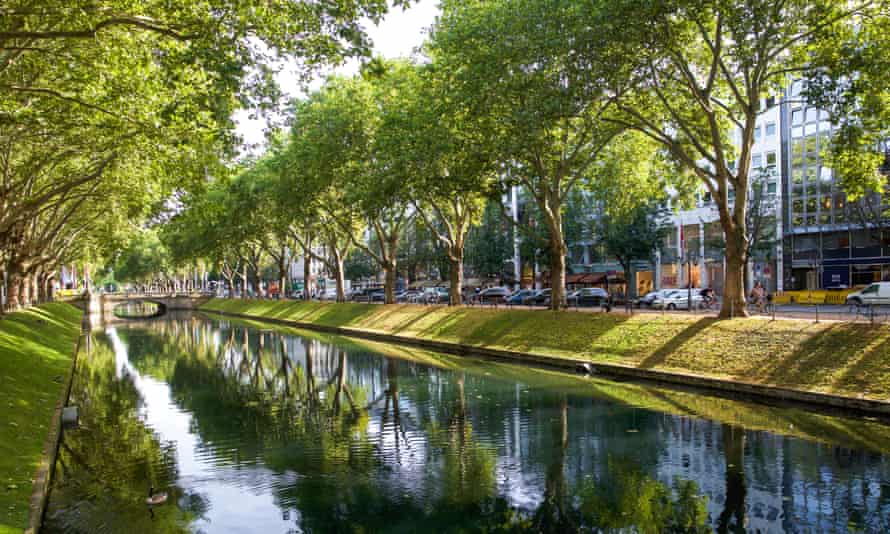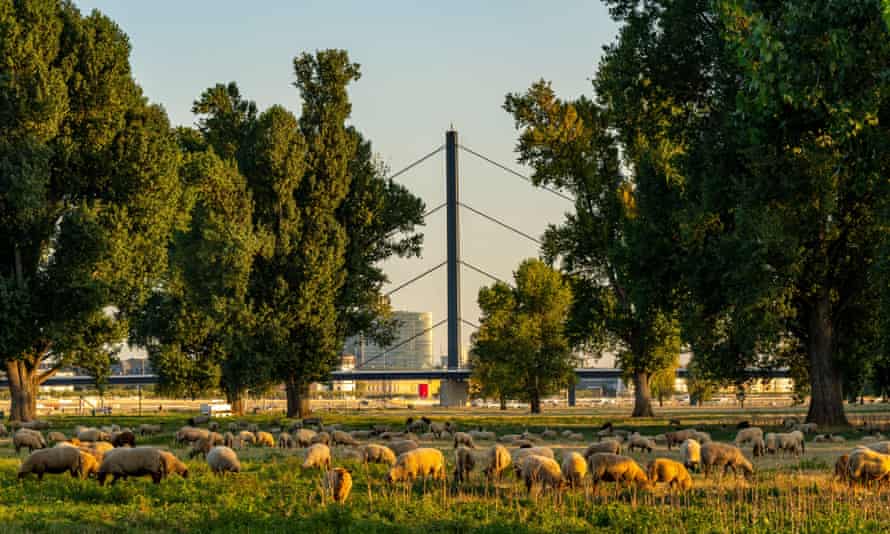I took the train to Düsseldorf – here’s my guide to the city | Germany holidays
Düsseldorf’s residents call their home “the 10-minute city”, because it rarely takes longer than that to get wherever you want to go. That’s a big claim for somewhere that boasts no fewer than 50 stadtteile (mini districts), but it’s backed up by a transit system of U-Bahns and S-Bahns that gets you around easily. And therein lies Düsseldorf’s great appeal: a small city of just over 600,000 inhabitants, with the infrastructure, the internationality and the sheer cultural heft of a much larger place. Add in the fact that more than 57% of its area is green space, and you can understand why a recent study ranked it the world’s sixth best city to live.
There’s plenty of wealth at play here, much of it being splashed along the tree-lined, canal-adjacent Königsallee, one of Germany’s most famous shopping streets. As the postwar capital of North Rhine-Westphalia (established in 1946), the most populous state of the nation, Düsseldorf became a hub for global business and finance, and the well-dressed glitterati who frequent the kilometre-long stretch of designer stores on “the Kö” have earned it a reputation for snobbishness.
That’s only a sliver of the story, however. Visit the Altstadt (old town) of an evening and you’ll find a lively-to-boisterous centre that cares more about good times than fine taste, and where the 300-plus pubs, breweries, restaurants and clubs are so closely aligned they like to call it “the longest bar in the world”. Established neighbourhoods such as Bilk and Flingern – and emerging ones such as Derendorf and Pempelfort – house diverse populations, blending daytime chic with an energetic nightlife. There’s a teeming counterculture courtesy of the city’s art school, and the largest Japanese community in Germany can be found in Niederkassel and along the Immermannstrasse (AKA Little Tokyo) where the ramen can’t be beaten.

The imposing Rhine has long been a site of heavy shipping; today it’s a place for a walk or a drink, for skateboarding and eating ice-cream, courtesy of the promenade that runs along its east bank. At its southern end is Medienhafen, where the old harbour has been transformed into a vision of ultra-modernity. Since the arrival of Frank Gehry’s three bendy buildings at the end of the last millennium, a sort of architectural Epcot has emerged around them, where the interplay of the many new structures is as mesmerising as their individual designs, all overlooked by the needle-like Rhine Tower, with its panoramic viewing platform and rotating restaurant.

Across the river lies Oberkassel, the somewhat exclusive district where sheep still graze on the pretty waterside meadows; they keep the view neat and tidy for the owners of the pricey art-nouveau buildings that look out across them. There’s plenty of parkland to choose from wherever you find yourself in the city, however, from the expansive Hofgarten, home to the iconic curves of the Schauspielhaus performing arts centre, to the romantic ponds in front…
Read More: I took the train to Düsseldorf – here’s my guide to the city | Germany holidays
